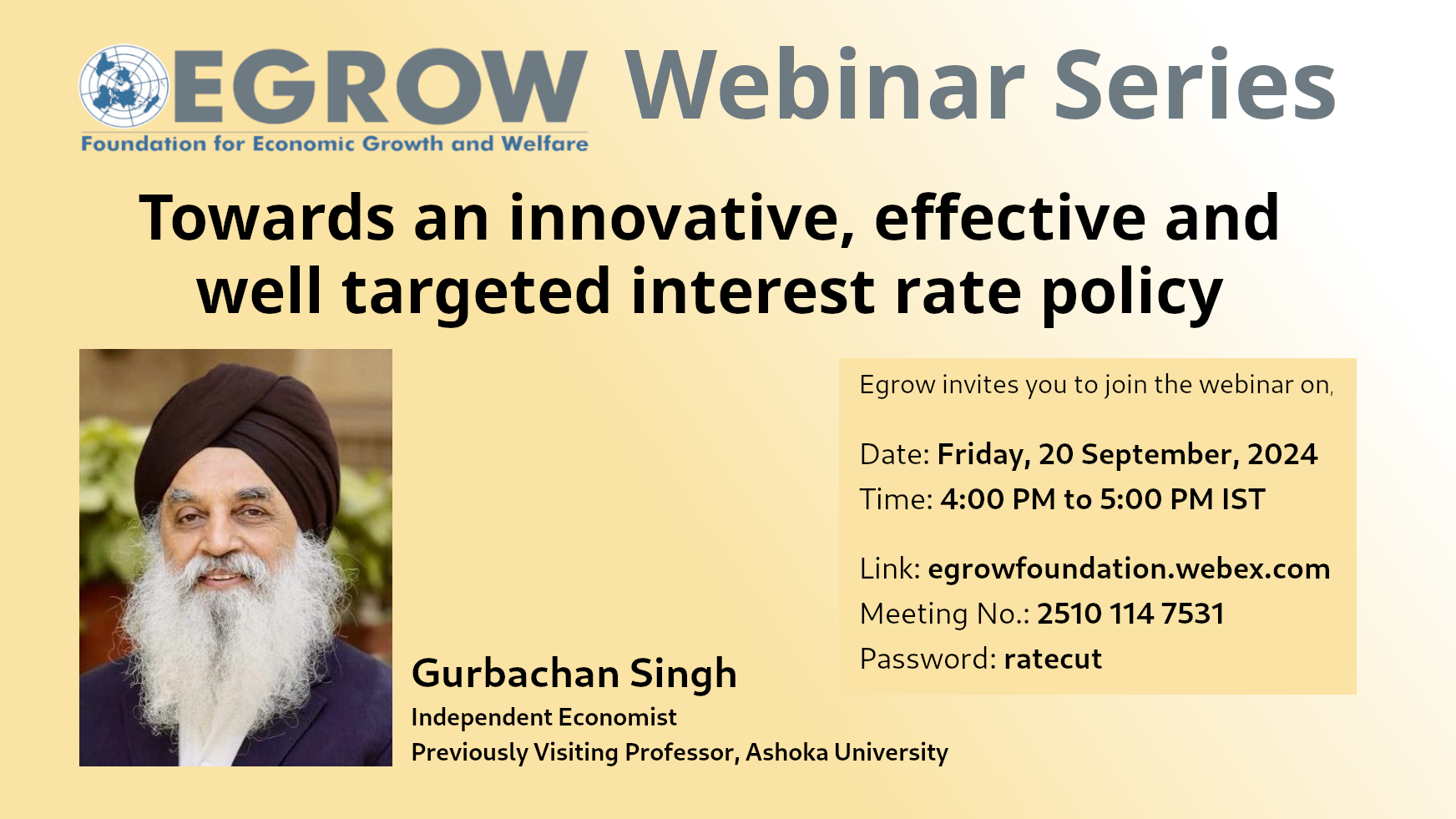Towards an innovative, effective and well targeted interest rate policy

Webinar Link
Meeting No: 2510 114 7531
Password: ratecut
Certificate of Participants
To recieve certificates, please register and attend
Abstract
The central bank faces a trade-off while using its interest rate policy for the purpose of macroeconomic stability. So, the policy is not very effective. Also,the prevailing interest rate policy includes a quasi tax-subsidy scheme. In, say, a recession when the central bank lowers the interest rate it gives a quasi subsidy to borrowers and it imposes a quasi tax on savers. So, the policy is redistributive. Also, the changes in interest rates affect asset prices. So, ceteris paribus, it has adverse side-effects for asset price stability. This can, in turn, affect banking stability as well (e.g. the Silicon Valley Bank case in the US). So, the prevailing policy is also blunt besides being non-transparent.
About the Speaker
Gurbachan Singh
Gurbachan Singh is an independent economist. He was previously visiting professor at Ashoka University. He has taught at Indian Statistical Institute (ISI), Delhi Centre, Jawaharlal Nehru University, and University of Delhi. His writings are primarily on the interface between macroeconomics and finance. The work is mainly in theory to explain the real world and to devise better economic policies.
Besides publications in academic journals, he has contributed substantially to Ideas for India, and Business Standard. He published a book on Banking Crisis, Liquidity, and Credit Lines with Routledge, Abingdon. His new book on Macroeconomics and Asset Prices - Thinking Afresh on Basic Principles and Policy is nearly complete.
He received his PhD from ISI (Delhi Centre), and MA from Delhi School of Economics.